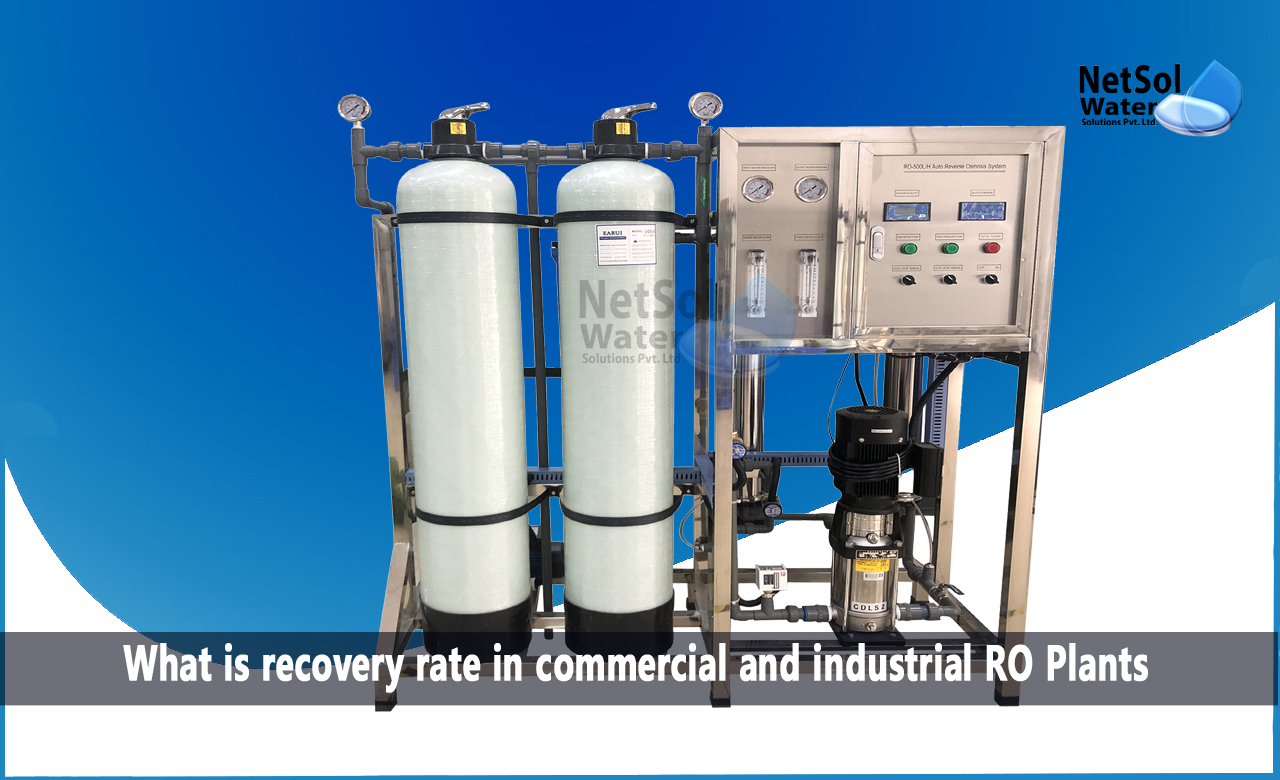The highest level of water purification technique that humans have currently perfected is reverse osmosis, and it has an almost 100% cleanliness rate. Reverse osmosis technology is used to increase water purity, by removing salts and other contaminants from the water.
The recovery rate of the membrane system, a crucial performance indicator, typically attracts considerable attention when utilizing reverse osmosis membranes, to treat raw water. A high rate of recovery indicates a high water output capability.
So, what is the reverse osmosis system's recovery rate?
Let’s understand the recovery rate in commercial and industrial RO plants!
The recovery rate, which is based on the pre-treatment influent water quality and water requirements, is the proportion of the influent water in the membrane system that is transformed into product water or permeates.
Numerous variables, including the calibre of the water source and the quantity and arrangement of membrane components, have an impact on the system's recovery rate.
The small-scale reverse osmosis device's system recovery rate is often poor, due to the device's few membrane components and quick water delivery process. The actual system recovery rate is typically above 75%, and occasionally even surpasses 90%, due to the device's numerous membrane components and lengthy water delivery procedure.
How to determine recovery rate in Industrial and Commercial RO systems?
Depending on the quality of the influent water, the recovery rate of a traditional single-branched reverse osmosis membrane element varies. According to the size of the system and the calibre of the raw water, the recovery rate of conventional reverse osmosis membrane systems also ranges from 30% to 90%.
Calculation of recovery rate of industrial and commercial RO Plant
R%=Fp/Ff×100%
Where in the formula:
Ff = water flow rate entering the reverse osmosis membrane (system) (m³/h)
Fp = The reverse osmosis membrane's water flow rate (m³/h)
R = Reverse osmosis membrane recovery rate (system)
The recovery, for instance, is (75/150) x 100 = 50% if your feed flow is 150 gpm and permeate flow is 75 gpm.
What does high recovery rate indicate in RO Plants?
Reverse osmosis plants may occasionally also need a high system recovery rate, in order to prevent water waste. Currently, many countermeasures must be used when building reverse osmosis equipment.
The most typical approach use is that only a portion of the concentrated water from the reverse osmosis device is released, and the remaining portion is circulated into the feedwater pump's input. This is known as the partial circulation of the water.
At this point, it can guarantee that the membrane element's surface maintains a specific horizontal flow rate, and also achieve the user-required system recovery rate.
Conclusion
The feed water/concentrated water intake and exit valves cannot be directly changed, to boost the system's recovery rate. If this is done, the membrane elements will become more polluted, which can have negative effects.
How can we assist?
The reverse osmosis (RO) systems offered by Netsol Water are incredibly effective, in removing unwanted dissolved particles from tap, brackish, well water or industrial water. With less wastewater, less energy usage, higher flow rates, and contaminant rejection at competitive prices, our system is the most valuable on the market.
These systems have highly desirable characteristics learned from years of experience, building high-quality reverse osmosis systems, together with reliable components and a sturdy construction. Contact us at +91 9650608473 or send an email to enquiry@netsolwater.com for more information.



